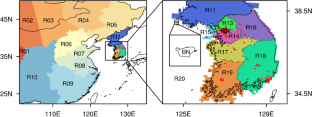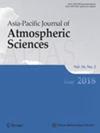Recent Air Quality Deterioration on Weekends in Seoul, South Korea: a Focus on External Contribution
Abstract
This study has found that the wintertime (November–March) air quality in Seoul, Korea had been deteriorated in weekends during the period of 2016–2019. Specifically, the concentration of particulate matters (PMs) of aerodynamic diameter less than 2.5 μm (PM2.5) in weekends (Saturday–Sunday) was up to 30% higher than that in the mid-week (Wednesday–Thursday) days (probability value < 0.01). As the weekend PM concentration had been lower than the mid-week values by 10% until 2015, such a sudden change in the intra-weekly air quality is unexpected. This study finds out that the deterioration of air quality in weekends can be attributed primarily to secondary particle formations and external transports from China (Shandong and northeast provinces) and domestic provinces (southern Gyeonggi and Chungcheong in Korea) to Seoul. High concentration of PM2.5 on weekend could be partially explained by the differences in the concentrations of inorganic PM components including nitrate, ammonium, and sulfate between weekends and mid-week days. About 40% of the differences are attributed to the domestic sources located in the southern region to Seoul. However, domestic emission from power generations and industry sector in southern source region on weekends does not well explain the variations of the PM precursors in weekends. Therefore, a clear strategy for improving air quality on the weekend in Seoul requires steady efforts to accurately calculate regional emissions and to reveal missing emissions sources.


 求助内容:
求助内容: 应助结果提醒方式:
应助结果提醒方式:


